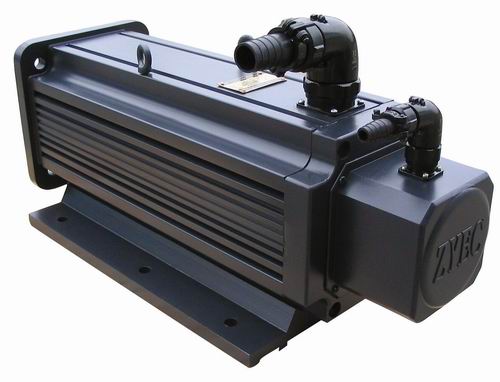The servo engine is a closed-loop servomechanism that uses position feedback in order to control its rotational speed and position. The control transmission is the input, either analog or digital, which represents the ultimate position order for the shaft.
Servo drives are created to power and manage performance of electric powered servomechanisms. They specifically monitor feedback indicators and continuously adjust to deviations from the anticipated behavior of closed loop systems. This can help to improve servo motor overall performance through faster acceleration rates and more precise swiftness and position control.
AC servo drives are particularly created for AC motors, and offer the added benefit of motor feedback. After getting and transmitting indicators to produce motion, these drives also get and adjust to reports from sensors on engine status. In providing continuous adjustment, they amplify overall performance when it comes to the required velocity, torque, and position, and also stiffness, damping, and opinions gain in AC servo motors and control systems.
The Ever-power family of brushless servo systems is fully digital and offers a rich set of features to cover a wide range of applications. There are eight regular servo motors which can be managed in combination with one of three regular servo drives.
The Ever-power brushless motors add a 2,500 collection incremental encoder with quadrature data signals (A+, A-, B+, B-) and a marker pulse (Z+, Z-). All three indicators have a series driver output resulting in 10,000 pulses per revolution plus index tag as the standard resolution inside the drive. Each servo electric motor also offers one connector for the encoder and another connector for the motor power and optional 24 VDC spring-set keeping brake.
SureServo Family
The servo drives can be configured for a wide selection of command sources including analog torque, analog velocity, “step and direction” or “up and down” pulse position, quadrature encoder follower, and built-in movement controller with preset position, velocity, or torque. Presets could be chosen with discrete inputs or modified with the MODBUS serial interface.
Configuration and diagnostics of the servo drives could be accomplished with the integrated keypad/screen or the easy-to-use SureServo Pro software program on a Home windows environment.
Motor Features
Low inertia models:
100 W, 200 W, 400 W, 750 W and 1 kW
Speeds up to 5,000 rpm.
Medium inertia models:
1 kW, 2 kW and 3 kW
Speeds up to 3,000 rpm.
Square flange mounting with metric dimensions: 40, 60, 80, 100, 130 and 180 mm flanges
Keyless drive shafts support clamp-on style coupling
Integrated encoder with 2,500 (x4) pulses/revolution plus marker pulse (one time per revolution) Optional 24 VDC spring-set holding brakes
Optional 24 VDC spring-set holding brakes
Standard hook-up cables for engine power/brake and encoder
Standard DIN-rail mounted ZIPLink break-out package for the drive CN1 connector (with screw terminal connections)
Drive Features
Main Power and Control Power Inputs
Main Power: 230V AC 3-Phase (Single phase choice w/ low inertia systems)
Control Power: 230V AC Single Phase; 50/60 Hz
Fully digital with up to 450 Hz velocity loop response
Easy set-up and diagnostics with built-in keypad/display or the SureServo Pro PC-based software
Five-in-one command choices include:
±10V torque or velocity command
Pulse train or learn encoder position order (accepts collection driver or open collector) with electronic gearing
Built-in indexer for position control using 8 preset positions and/or placement setpoint with serial MODBUS
Tuning aids consist of inertia estimation and easy-tuning for 10 degrees of response
Optically-isolated digital inputs (8) and outputs (5), analog outputs for monitor indicators (2), and line driver output for encoder (with scalable resolution)